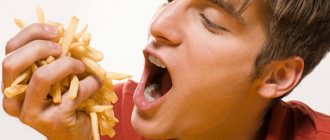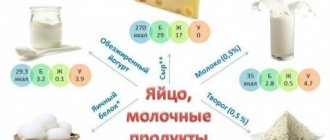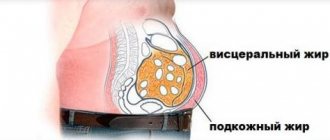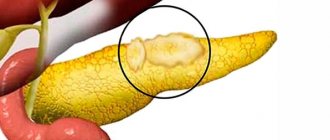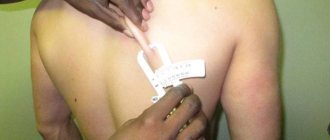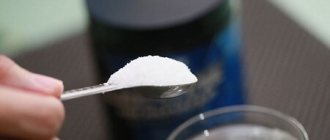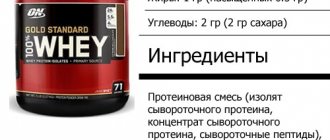Working as a fitness trainer, I heard the wish “I would like to lose weight and gain some muscle here and there” from almost every beginner. (There were even people who wanted to “pump fat into muscle,” which, as I will explain below, really cannot be done). Meanwhile, bodybuilders and fitness athletes often claim that this is impossible.
In fact, both are right. It is possible to lose weight and gain muscle mass at the same time - but only for one category of trainees. This is confirmed not only by my 15 years of coaching experience, but also by the statistics of my fellow coaches and sports physiology data.
What's the contradiction?
To lose weight, as you know, the intake of calories into the body should be lower than the expenditure. Schematically speaking, we begin to exercise - we increase calorie consumption. We eat less simple carbohydrates and fats - we reduce intake. In response, the body is forced to take energy - not only for training, but also for everyday life! - from long-lasting reserves, that is, from adipose tissue.
What is the plan for muscle growth? They are formed from proteins. Physical activity (mainly strength) triggers a rather complex chain of biochemical reactions: exercise causes microdamage in the muscles, and in response, hormones and growth factors are produced that literally “repair” damaged cells and stimulate the synthesis of new ones. Now pay attention: new cells are synthesized from protein - which means that a person’s diet after training should contain more protein than usual. And the second point: protein synthesis requires a lot of energy, therefore, the diet should contain a lot of carbohydrates. (I think you now understand why it is physiologically impossible to “pump fat into muscles”? There are no proteins or carbohydrates in fat reserves! Nothing can be “extracted” from them except energy.)
The ideal balance of proteins and carbohydrates is represented by high-carbohydrate protein mixtures (aka gainers), which add 500-800 kcal to your norm. The second option is to make it from low-fat cottage cheese and chicken breasts with rice. The situation is still stalemate. To lose weight you need a deficit of energy, to gain muscle mass you need an excess of it.
Our regular author Dmitry Yakovina, editor-in-chief of the online magazine Pro Status, tells how you can build muscle and burn fat at the same time.
— There is one question that haunts many. Because the answer to it is most often not optimistic. “Is it possible to build muscle and burn fat at the same time.” In most cases, fitness specialists or simply experienced bodybuilders answer: no, you can’t. However, I would not be so categorical, first of all, because it is necessary to clarify what scale of these processes we are talking about.
So, any phenomenon has a “scale”, that is, a certain degree of expression of this phenomenon. And if we proceed in principle from whether it is possible to simultaneously build muscle mass and burn fat, then the answer is unequivocal: YES! This is an absolutely natural course of events for our body. For example, at night, when we do not receive energy from the gastrointestinal tract, which in physiology is called the post-absorptive period, our body actively extracts energy from fat reserves. It is for this reason that up to 80% of the daily intake of somatropin is secreted at night. A normal person sleeps at night and does not eat, because nature has adjusted the biorhythms of one of the main lipolytic hormones in such a way as to ensure a stable flow of energy during night sleep. Somatropin stimulates lipolysis, and lipolysis gives us fatty acids ready for consumption. At night, we actively build muscle tissue, and part of the fat energy goes to ensure protein synthesis. That is, at least during the night period, we build muscle and burn fat AT THE SAME TIME.
Those who like to read scientific research should have noticed that the result of many of them is an increase in lean muscle mass and a simultaneous loss of fat. We are talking about experimenting with training regimens, diets, or taking pharmacological drugs and nutritional supplements. As a small example, I will give a few similar ones.
Thus, in the “Korean Journal of Physiology and Pharmacology” in 2014, a study was published showing that experiment participants who took ursolic acid as a supplement and regularly worked out in the gym gained an average of 1.17 kg of muscle mass and lost 3 kg over 8 weeks. fat
Italian scientists published the results of a study in the Journal of the International Society of Sports Nutrition that examined the performance of experienced gymnasts during a 30-day period of following a keto diet (no more than 25 grams of carbohydrates per day). The total number of kilocalories per day for the athletes was 1970. Protein intake was high: 2.8 g per kilogram of body weight per day. At the end of the experiment, the gymnasts added an average of 800 grams of muscle mass (which is not bad in 30 days for already experienced athletes, and not even bodybuilders) and lost 2 kg of fat.
Even more impressive results were announced in the journal Clinical Endocrinology and Metabolism in July 2013. In particular, scientists studied the effect of testosterone injections on fat deposits in the body of non-exercising men. All participants in the experiment were on the same diet, the energy value of which was 35.82 kilocalories and 1.3 grams of protein per kilogram of body weight per day. That is, a 100-kilogram man consumed 3582 kilocalories and 130 grams of protein. After 20 weeks, participants who received testosterone injections of 300 mg and 600 mg per week increased lean muscle mass by 10 and 17%, respectively, while reducing total body fat by 10%.
There are very, very many such studies, and none of the scientists has ever been surprised by the fact of changes in body composition, expressed in the growth of lean muscle mass and loss of fat mass. This is normal, it is natural for the human body and especially for a physically active person. You just need to understand that such changes are possible only within certain, fairly limited limits. Of course, when a person radically goes into mass gain, eating a bunch of extra calories, then there can be no talk of any fat loss. The situation is similar with “drying”. Trying to lose 10 kg of fat in a month, it is unlikely that with the level of energy deficit required for such a result, we will also be able to increase “meat”. But the fact remains a fact. It is possible to grow muscle and burn fat at the same time. Under certain conditions, on a limited scale.
Dmitry Yakovina openly about Russian bodybuilding, Men`s Physique and the Russians’ chances at Olympia (video)
#fat #muscle mass #muscles
Previous Drinking plenty of fluids may be more harmful than dehydration
Next Do you need to rest during training?
Leave a comment (Cancel)
Losing weight and gaining muscle mass: how is this paradox resolved?
The classic sports scheme involves 2 stages. First, against the backdrop of high-intensity training with heavy weights and high-calorie nutrition, we gain both muscle and fat. Then we reduce the working weights and add aerobic exercise, change the diet - and “get dry”, that is, we burn off excess fat and water, preserving muscles.
Using this scheme, you can gain a fairly large amount of muscle tissue - 5-10 kg per year. A person’s clothing size may increase, and body proportions may change. In particular, trousers tailored for ordinary people are always loose in the waist and buttocks, but are difficult to stretch over pumped-up hips, and jackets are narrow in the shoulders and back, but too wide in the abdomen. Such athletes, especially bodybuilders, build muscle mass much more than the physiological norm! This process in sports physiology is called muscle hypertrophy.
But the fact is that most people who come to the gym, especially women, don’t come for it at all! What they call “pumping up” actually does not mean muscle hypertrophy and radical restructuring of the body, but tone and restoration of muscle tissue deficiency.
[new-page]
It is not difficult to fully recover.
Research has clearly shown that fat cells in obese people incorporate new fat 2 times faster than those in people of normal weight. This means the higher a person's body fat percentage, the faster they gain new fat. And it's been proven! All other things being equal - the same diet and the same physical activity - an overweight person will gain new kilograms faster.
I don’t like this formulation that obesity is excess weight. No, obesity is excess fat. And you need to lose weight by getting rid of excess fat, but at the same time be patient and remember that fat goes away slowly. If a person loses weight quickly, this means that first excess water leaves (and this, of course, is good), and then muscles will quickly leave. But this is very bad.
Who can lose weight and gain muscle mass at the same time?
Someone who has muscle mass below the physiological norm. According to research, it should be about 30% of body weight in women and about 40% in men. The body reaches this proportion naturally after puberty at the age of 21-25. But after this age, if you do not support the muscles with training, they gradually decompose. On average, by 1-2% per year, but if a person leads a sedentary lifestyle and does not eat enough protein, then even faster. As a result, people come to the fitness club whose muscle mass at 30 years old is only 18-20% (I personally saw this in testing), but they have too much fat.
When such people begin to move more to lose weight, their muscles tend to restore their natural normal. Accordingly, if a slightly increased amount of protein enters the body (1-2 g per 1 kg of weight), they will grow! You can use protein shakes that contain minimal carbohydrates (about 100 kcal per serving). In this situation, the body takes energy for the synthesis of muscle cells from fat reserves, because with the help of training and diet the body is already configured to consume it. Supplements that facilitate the conversion of fat into energy and muscle recovery (L-carnitine, synephrine, B vitamins, inosine, chromium picolinate, etc.) can help here.
Iron Health

Well-established stereotypes in bodybuilding have taught us to think that gaining muscle mass and burning fat cannot happen at the same time. Even professional bodybuilders divide the preparation period into a mass-gaining period and a cutting period. At the same time, during the period of mass training, it is generally accepted to eat a lot, that is, use hypercaloric nutrition - they say, this is what grows our muscles. At the same time, burning fat and gaining muscle mass at the same time are not considered, since it is believed that this is impossible (after all, to grow muscle mass you need to eat a lot, how will you lose weight?). However, this approach is wrong - these two processes can be combined, that is, there is nothing impossible in burning subcutaneous fat and at the same time gaining muscle mass. I will tell you how to do this in this article.
Gaining muscle mass and hypercaloric nutrition
One of the main misconceptions of bodybuilding is that to effectively gain muscle you need to eat a lot. This misconception is so ingrained in the minds of athletes that it is perceived as dogma. However, excess calories only promote the growth of adipose tissue. In addition, increased consumption of carbohydrates and fats leads to decreased production of anabolic hormones.
Why is this misconception so popular? It's simple. The process of muscle growth is quite long and cannot be measured in days or weeks. Hypercaloric nutrition leads to fairly rapid weight gain, which can be noticeable already in the first month. The illusion is created that you have gained muscle mass, but the increase in mass on the scale was provided only by subcutaneous fat and fluid, which is retained with increased carbohydrate consumption. The level of muscle mass remains the same.
How to gain muscle mass correctly? Try to consume exactly as many calories as you burn. This will not lead to the growth of adipose tissue and a decrease in the level of anabolic hormones, but will be sufficient to maintain the optimal speed of the muscle growth mechanism. Gain muscle mass while burning fat
Burning fat is only possible when you are in a calorie deficit, that is, consuming fewer calories than you burn. However, with a calorie deficit, as well as with their excess, there is a decrease in the production of anabolic hormones. I wrote about this in more detail in the article “On the influence of nutrition on the levels of anabolic hormones.”
You can reduce the negative impact of low-calorie diets by using high-intensity training programs (increase the synthesis of anabolic hormones) and consuming enough protein (1.5-1.7 g per 1 kg of body weight). In this way, you can avoid losing existing muscle mass and even increase it slightly and at the same time effectively reduce the percentage of body fat. Once the desired form is achieved, it is necessary to increase the caloric content of the diet to a level at which calorie intake is equal to their expenditure. This will significantly accelerate the growth of new muscle mass and will not lead to an increase in fat mass.
Additional
Where is the proof?
Many people are familiar with the effect of the first months in a fitness club: clothes fit looser, waist and hip measurements in centimeters decrease, but weight in kilograms does not change. This is precisely an indicator that muscle mass is growing: it is 30% heavier than fat. After several years of a sedentary lifestyle, muscles can grow even from workouts that are not intended for such a gain at all: running, aerobics, cycling.
Of course, it makes no sense to compare such an increase in muscle tissue in absolute numbers (centimeters in the biceps, kilograms) with the hypertrophy that we see in bodybuilders and related sports. As a rule, clothing sizes do not increase. Accordingly, recovery to normal is more noticeable.
In general, if you are involved in fitness and stick to proper nutrition for about a year, the trend of “losing weight and building muscle at the same time” is no longer a threat to you. This is only available to beginners after a sedentary lifestyle.

